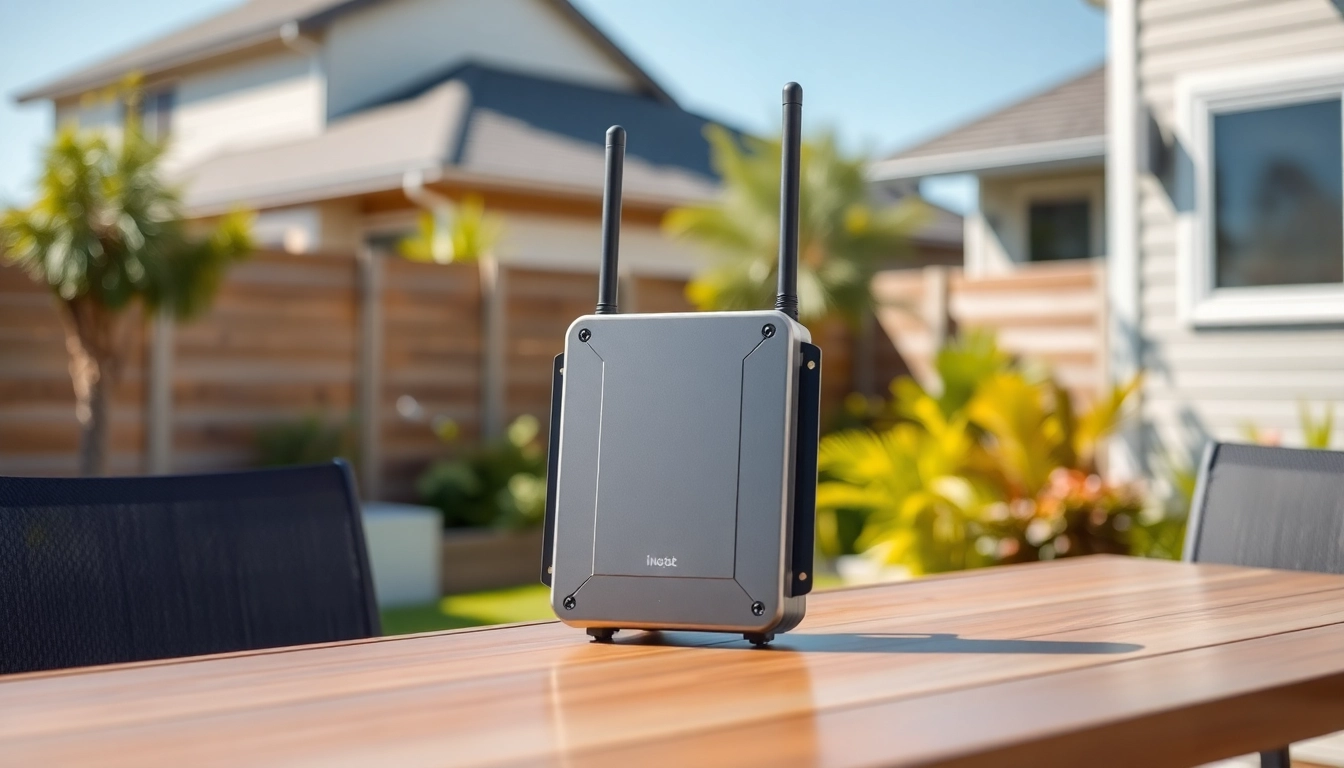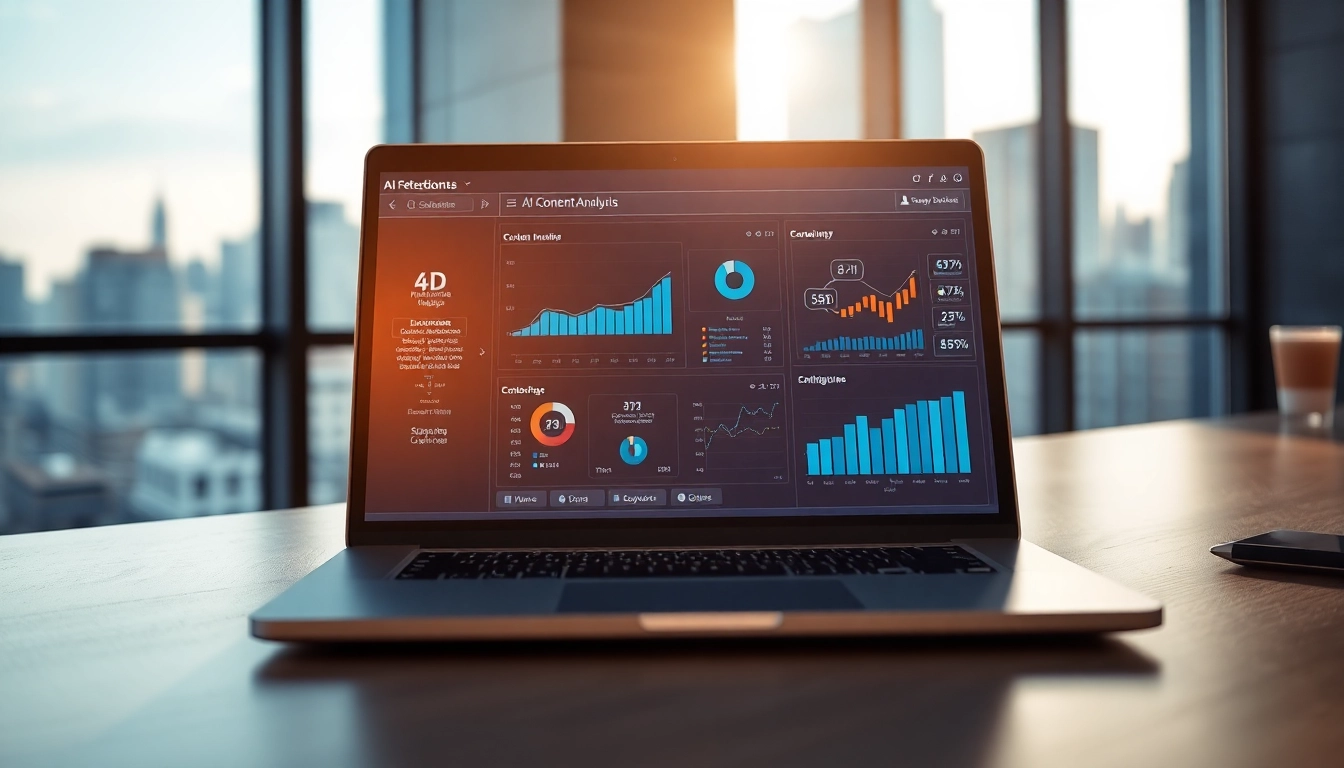
Understanding Cellular Antenna Booster Technology
What is a Cellular Antenna Booster?
A cellular antenna booster is a device designed to enhance the strength and quality of cellular signals in areas where the reception is weak. Often known as cell signal boosters, they capture the existing cellular signals, amplify them, and then redistribute the stronger signal throughout a defined area. These devices can be a boon for users in remote locations, buildings with thick walls, or urban settings where signal interruption is common. By employing a cellular antenna booster, individuals and businesses can ensure reliable connectivity, leading to improved communication and productivity.
How Cellular Antenna Boosters Work
The operational mechanics of cellular antenna boosters can be broken down into several key components: an external antenna, an amplifier, and an internal antenna. The external antenna is mounted outside the building or vehicle and captures the weak cellular signals from nearby towers. Once the signals are captured, they are sent to the amplifier, which boosts the signal’s strength significantly. Finally, the powered signals are transmitted through the internal antenna, making the improved cellular connectivity available throughout the designated area.
Universal compatibility with multiple carriers is a notable feature of many modern cellular antenna boosters, allowing diverse users to benefit from enhanced cellular service. Furthermore, these devices typically include various filtering systems to minimize background noise and only enhance signals from desired frequencies.
The Benefits of Using Cellular Antenna Boosters
The advantages of using a cellular antenna booster extend beyond mere connectivity. Among the most significant benefits are:
- Improved Signal Strength: A booster enhances cellular reception, allowing users to enjoy clearer calls and faster data speeds.
- Increased Battery Life: With better reception, mobile devices expend less energy searching for signals, potentially prolonging battery life.
- Enhanced Voice Quality: Users can experience fewer dropped calls and clearer voice quality, essential for both personal and professional communication.
- Wider Coverage: A cellular antenna booster can expand the range of connectivity within larger buildings and even vehicles.
- Simplicity and Affordability: Compared to satellite communication solutions, cellular antennas are generally more accessible and easier to install.
Selecting the Right Cellular Antenna Booster for Your Needs
Identifying Your Signal Strength
The first step in selecting the right cellular antenna booster is determining the strength of your existing cellular signal. There are various methods to measure this, with common tools including mobile signal strength apps and signal meters. Most smartphones have built-in signal meters that provide information about the signal quality through numerical values, typically represented in decibels (dBm). A dBm value between -50 to -70 is generally considered excellent, while values below -100 indicate poor signal strength.
Understanding your signal strength is vital as it informs the type and specification of the booster you may require. A larger signal loss may necessitate a more powerful booster to achieve satisfactory performance.
Factors to Consider When Choosing a Booster
When selecting a cellular antenna booster, it’s essential to consider several factors:
- Coverage Area: Assess the size of the area you want to boost cellular signals in. Different boosters come with specifications targeting various coverage ranges.
- Carriers Supported: Ensure the booster is compatible with all cellular networks you intend to use, especially if there are multiple carriers present.
- Installation Requirements: Some boosters are designed for DIY installation, while others may require professional setup. Evaluate your preferences and capabilities.
- Regulatory Compliance: Check that the booster complies with local regulations and certifications. Some areas may have specific rules governing signal amplification devices.
- Price: Prices can vary, so balance your budget against your coverage needs, ensuring you get sufficient performance without overspending.
Popular Features of Cellular Antenna Boosters
Modern cellular antenna boosters come equipped with several features designed to enhance user experience:
- Smart Technology: Many boosters incorporate advanced technologies like automatic gain control, which optimizes performance in real-time based on varying signal conditions.
- Multiple User Capability: Some boosters can support numerous users simultaneously, making them suitable for both homes and offices.
- Indoor and Outdoor Use: Having separate antennas for indoor and outdoor installations can help in achieving maximum performance in all settings.
- Mobile Apps: Many manufacturers provide accompanying apps for user-friendly monitoring and control of booster settings and performance metrics.
Installation and Setup Guide
Step-by-Step Installation Process
Installing a cellular antenna booster usually follows a straightforward process, albeit the complexity may vary based on the specific model. Below is a general step-by-step guide:
- Components Inventory: Ensure all necessary components are included in the package—external antenna, amplifier, internal antenna, and cables.
- Select Installation Location: Identify the best location for the external antenna to maximize signal capture, ideally on the roof or outside wall.
- Mount the External Antenna: Secure the external antenna in place using brackets or mounts provided, ensuring it is pointed toward the closest cell tower.
- Install the Amplifier: Connect the external antenna to the amplifier using the provided cables. Position the amplifier in an accessible location near a power outlet.
- Connect the Internal Antenna: Link the internal antenna to the amplifier, placing it in a central location in the area you want to cover.
- Power On: Plug the amplifier into an electrical outlet and power it on. Some models may indicate operational status with LED lights.
- Test Performance: Use a mobile device to check the signal strength in various locations in the coverage area to ensure optimal performance.
Common Installation Challenges
While installation is generally user-friendly, several common challenges may arise:
- Poor Signal Capture: This can occur if the external antenna is not positioned correctly. Adjusting its orientation or elevating its position can often resolve the issue.
- Interference: Some installations may experience interference from nearby structures. Moving the external antenna or changing its angle can help mitigate the problem.
- Cable Issues: Ensure cables are securely connected and undamaged. Twisted or kinked cables may lead to reduced performance.
- Power Supply Challenges: Confirm that the amplifier is receiving adequate power, as insufficient voltage can affect functionality.
Ensuring Optimal Performance After Setup
Once installed, ensuring sustained optimal performance is key. Here are practical tips:
- Regular Inspection: Periodically check the hardware for any signs of wear or damage, particularly the cables and connectors.
- Adjust Antennas If Necessary: Over time, signal conditions may change, necessitating adjustments in antenna positioning.
- Use Mobile Apps: If available, utilize manufacturer mobile apps to monitor performance and make adjustments remotely.
Maintenance and Troubleshooting Tips
Routine Maintenance for Longevity
Maintaining your cellular antenna booster ensures its longevity and optimal performance. Routine actions include:
- Cleaning Antennas: Regularly clean the antennas to remove water, dust, or debris, which can impede performance.
- Secure Connections: Inspect and tighten all connections periodically to prevent signal loss due to loose fittings.
- Firmware Updates: Some devices support firmware updates. Check periodically for any available updates that may improve functionality.
Common Issues and Their Solutions
Users may encounter specific issues that are typically straightforward to troubleshoot:
- Weak Signal Post-Installation: If the signal remains weak, consider repositioning the external antenna or evaluating the signal source location.
- Dropped Calls and Slow Speeds: This can indicate inadequate coverage area—consider upgrading to a more powerful booster if necessary.
- LED Error Indicators: Refer to the manual to interpret any error codes displayed by the amplifier’s LED indicators.
When to Seek Professional Help
While many setups can be handled independently, some situations warrant professional assistance:
- Complex Installations: For larger buildings or unique structures, hiring a professional can ensure optimal placement and configuration.
- Persistent Issues: If problems persist despite trying troubleshooting techniques, it may be a sign to consult with an expert.
- Compliance Concerns: When unsure about local regulations regarding signal boosters, an expert can provide clarity and ensure compliance.
Measuring the Effectiveness of Your Cellular Antenna Booster
Key Performance Metrics to Track
It is essential to monitor the performance of your cellular antenna booster to quantify its effectiveness. Key metrics to track include:
- Signal Strength (dBm): Monitor the signal strength before and after installation to gauge improvement.
- Data Speeds: Conduct speed tests at intervals to determine any changes in download and upload speeds.
- Call Quality: Evaluate clarity during phone calls, especially in previously problematic locations. Note any reduction in dropped calls.
Adjusting Settings for Improved Performance
Most boosters allow for various adjustments that may enhance performance, including:
- Antenna Positioning: Minor changes in direction or height can significantly impact capture quality.
- Manual Gain Control: Adjusting the gain settings may yield better results based on the specific environment and signal sources.
- Multiple Use Configurations: If supporting numerous users, optimally configure load balancing for the best performance across devices.
Comparing Before and After Results
To evaluate the impact of the installed cellular antenna booster, conducting comparative analysis is useful. Backup initial readings of signal strength and data speeds before installation, and then perform the same tests post-installation. Documenting this data provides insights not only into the performance improvement but can also guide future decisions regarding technology upgrades or adjustments.







